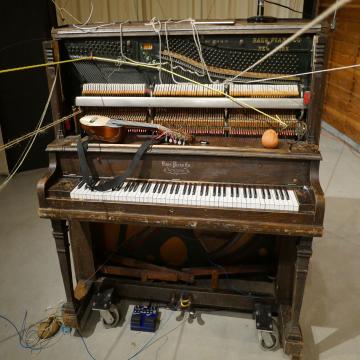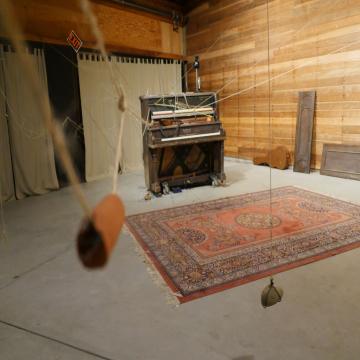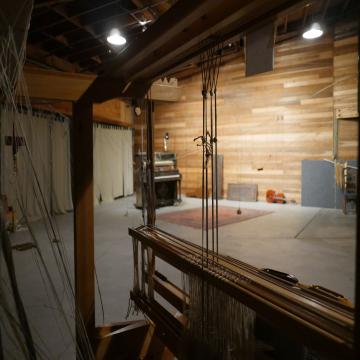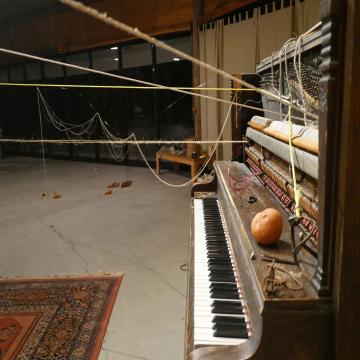Roots Harmonic Series I
A little bit about the first performance of the "Harmonic Roots Series" we presented last night in the Artist Barn - with Sebastian Perez and Dasha Lavrennikov. This was the inspiration:
It's been a privilege during this residency to dig deeper into words that relate to quantum mechanics but have also acquired a meaningful life elsewhere. Think in slow motion. Sometimes in retrograde motion. Think with wordiness and wordlessness. Travel into the body, get stuck in the head, sonify intuitions. Go back to words that made sense at some point, but dig into the assumptions we made at the time of uttering, or the assumptions we made about their intelligibility to someone. "entaglement," "vibration," "locality," "decoherence," "collapse," "indeterminacy," even "quantum" itself.
The hypothesis we're working with in this performance series is that the body knows these things "micro" undergoing collapse or decoherence or non-locality in a very intimate, true way; and that the improvisatory process exposes our "knowing" of this information in a very [experientially] precise way. Whether it works or doesn't is usually very clear. Improvisation is necessarily probabilistic, but choice-making in an improvisatory process is not random. Improvisatory decision-making is informed, it has a history -- not only the microhistory of the improvisatory set up, but also the infinite historicity each of us bring.
Inside that singular, isolated historicity is an uncountable number of indeterminate variables. No archival research, or philosophical inquiry, or anything else will ever "solve" the indeterminacy of our histories -- some (significant) portion will always remain underdetermined. Just like the fundamental indeterminacy that the Harmonic Oscillator model of an isolated quantum system brings with it: our most precise description of this quantum "building block" shows that our uncertainties are not mere "errors" or technological limitations. They are fundamental to this micro behavior.
The performance, then, serves as an experiment to understand “spooky action at a distance” of Entanglement not as spooky, but in fact as a consequence of this fundamental indeterminacy the Harmonic Oscillator model points to in practice. The hypothesis is that the experience of “rooting” the body, giving in to its fundamental indeterminacy, is the necessary foundation to make the feeling of entanglement emerge, to experience it precisely.
--
Some photos of the first performance with the 1909 (year confirmed by piano tuner!) piano that was be the centerpiece for this temporary installation.
The performance was very special, not only because it was combining the prepared piano genre with movement research, but also because it was quite literally connected to Hideo Mabuchi’s work on Pamela Djerassi’s loom. Given that many conversations about fundamental indeterminacy in QM took place with him, it made sense to make both a metaphorical and a physical connection: of piano insides exploding into an “entangled” structure that connected to the artwork of the expert on quantum theory, that connected to the weaving apparatus of the person who brought us here together in the first place, on the 40th anniversary of the day of her death.
The next performance will take place in nature, on the stumps near the Nash sculptures.




